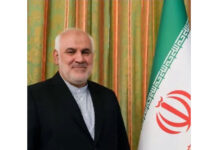Many across the world believe the next global war will be for water and not oil.
Water sources like the Nile River in Africa, Ganges-Brahmaputra and Indus Rivers in Asia, the Tigris-Euphrates, Colorado and Amazon Rivers are all lifelines and hot spots of human settlements.
A study, led by scientist Dr. Fabio Farinosi at European Commission’s Joint Research Center was quick to point out that tension won’t necessarily boil over into conflict. “It depends on how well prepared and equipped the countries are to cooperate,” he said in a statement. “This is where we hope our research can help, by raising awareness of the risks so that solutions can be sought early on.”
Scientists, the United Nations and world governments have been sounding the alarm about water-related conflict over several years. In 2012, the US Director of National Intelligence said the risk of conflict would grow as water demand is set to outstrip sustainable current supplies by 40 percent by 2030. “These threats are real and they do raise serious national security concerns,” Hillary Clinton said at the time.
South African city Cape Town went dangerously close to running out of water last year. Meanwhile, cities across the world are becoming increasingly thirsty as the demand for water grows and supply dwindles. From Bangalore to California, scientists are offering up grim predictions.
Groundwater is being pumped so aggressively that land is sinking. Some neighborhoods in Beijing (the world’s fifth most water-stressed city) are sinking as much as four inches a year according to UN report.
To make matters worse, China plans to build 40 dams in Tibet on the Brahmaputra, which will starve Bangladesh and India of precious water resources during drought seasons.
Water scarcity is becoming increasingly common all around the world, as country after country hits the limits of what it can use,” Professor Mike Young, a researcher in Water and Environmental Policy at the University of Adelaide told News.com.au last year, “Whether that’s in Australia, California, China, India, Pakistan, or right throughout Africa, water crisis is becoming a major issue.”
Twelve out of the 17-most water-stressed countries are in the Middle East and North Africa. The region is hot and dry, so water supply is low to begin with, but growing demands have pushed countries further into extreme stress. Climate change will only complicate matters further.
India is suffering from the worst water crisis in its history, and millions of lives and livelihoods are under threat. In addition to rivers, lakes and streams, India’s groundwater resources are severely overdrawn, largely to provide water for irrigation. Groundwater tables in some northern aquifers have declined more than 8 centimeters per year from 1990-2014.
India is beginning to take critical steps to mitigate water stress, including setting up the Jal Shakti Ministry to prioritize all water issues—including supply, drinking water and sanitation—under one national government umbrella. In a recent survey done, Damdama Lake that holds the largest rainwater in Gurgaon region in Haryana is totally dry now.
2.1 billion people globally do not have access to clean, safe drinking water. 3.4 million people die each year. Nations need to cooperate in earnest and take this enormous issue seriously on a war footing.







